Interpretive Nature Trails in the Adirondacks:
Heron Marsh Trail
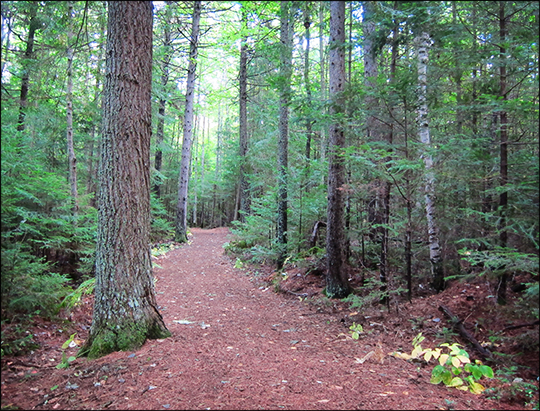
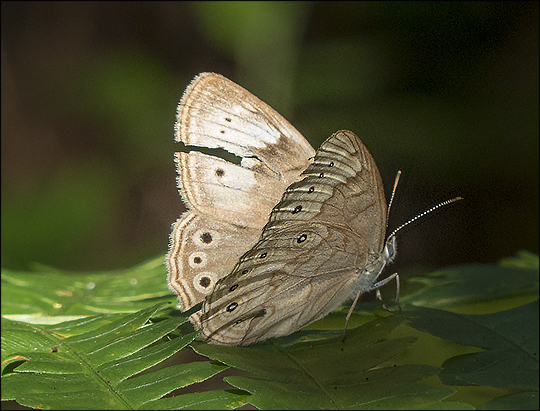
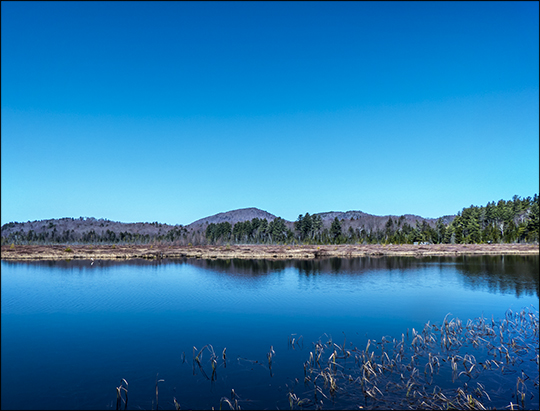
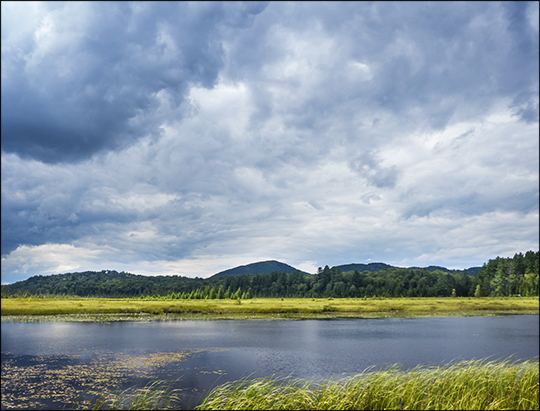
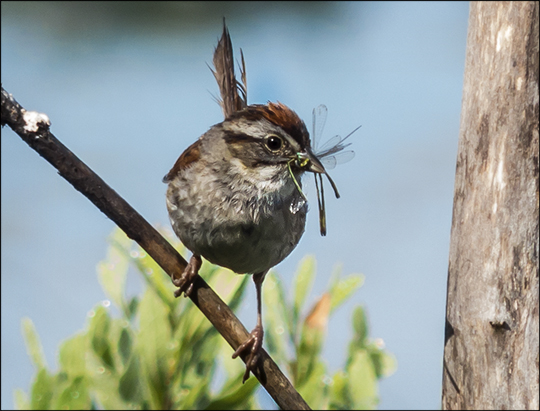
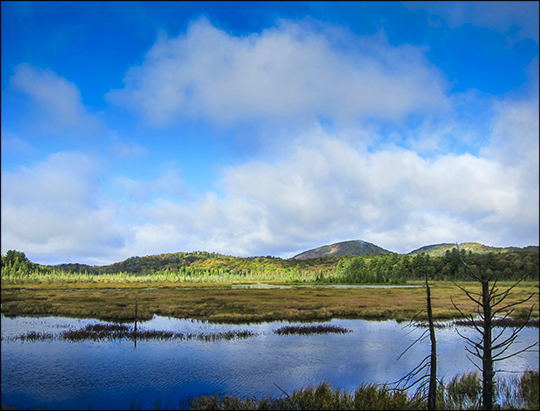
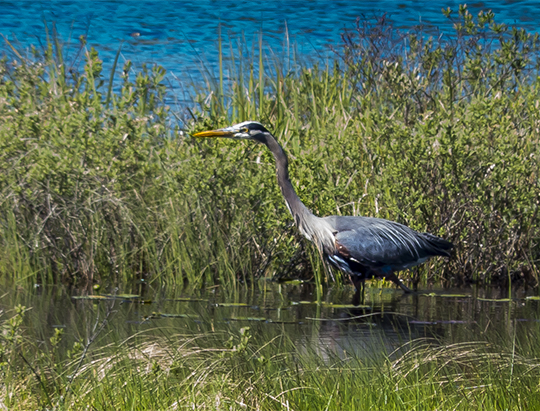
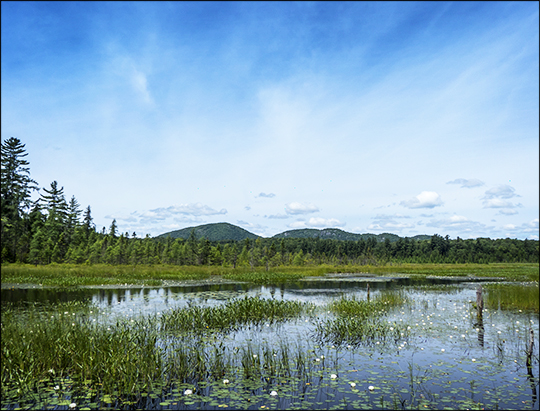
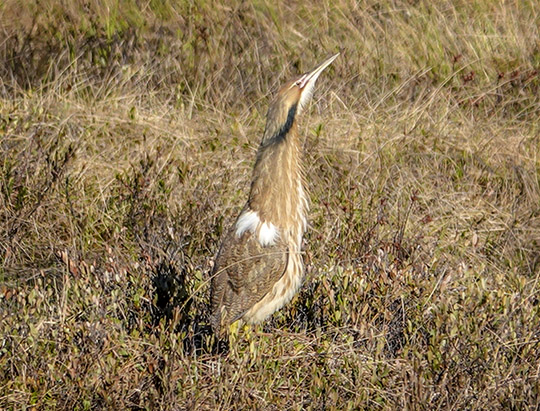
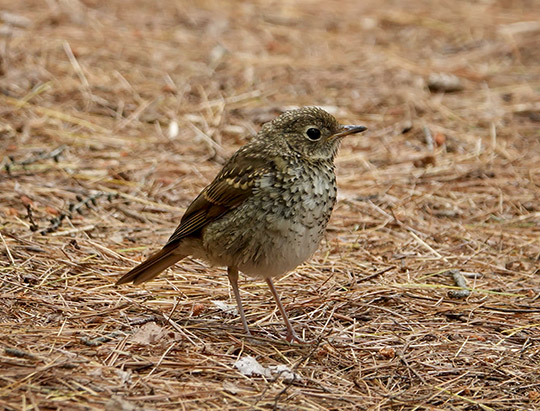
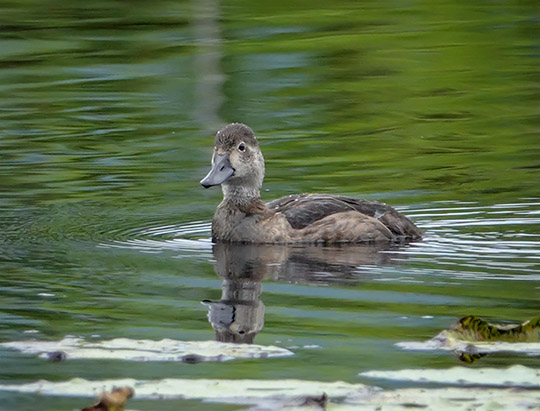
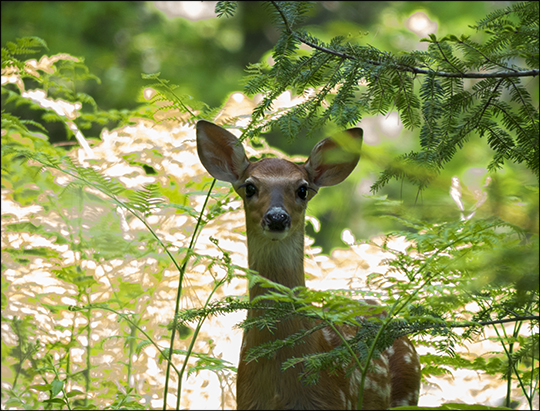
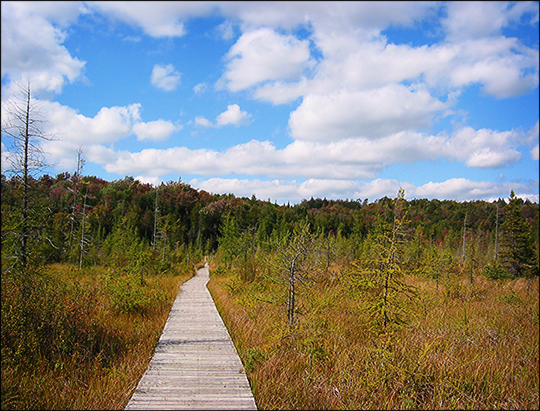
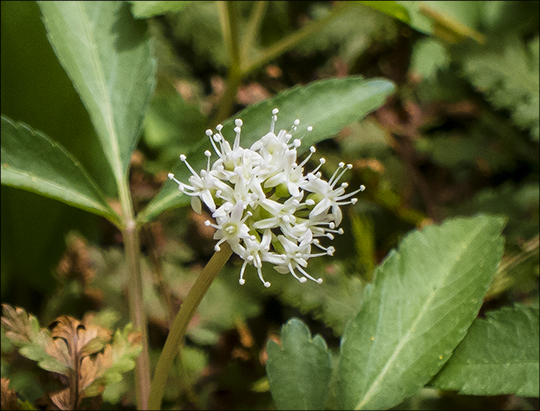
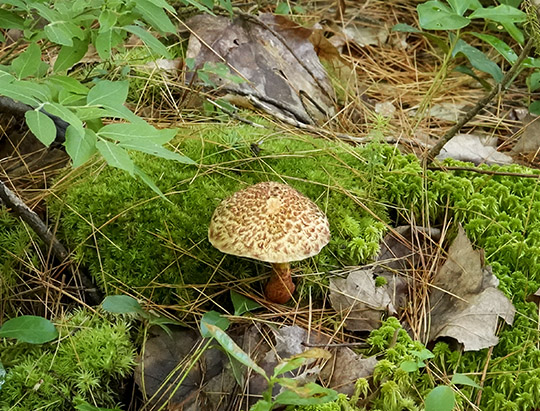
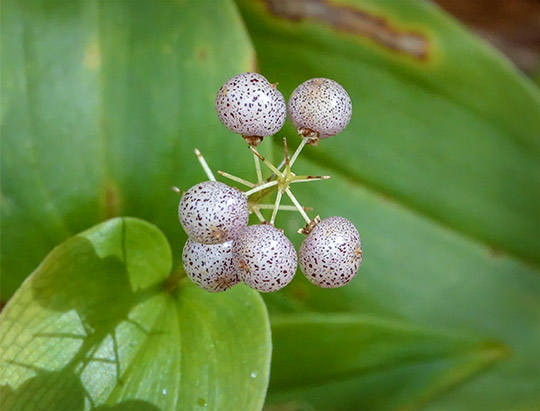


The three-mile Heron Marsh Trail takes visitors through prime wildlife viewing areas. The path includes a variety of Adirondack habitats, including wetlands, northern hardwood forest, and mixed wood forest. The trail begins near the deck of the Paul Smiths VIC Building. The first part of the trail takes you down near Heron Marsh, with two viewing platforms and an elevated tower to observe marsh regulars, including Great Blue Heron and American Bittern. The trail continues around Heron Marsh, passing the Shingle Mill Falls dam, then passes through a typical Adirondack forest community of mixed conifers and hardwoods, leading to a 900-foot boardwalk across Heron Marsh and Barnum Brook. The path then winds upward through a hardwood forest. The walking is easy with a few small hills.
The Heron Marsh Trail provides opportunities to study a variety of plants which flourish in different Adirondack habitats.
- The marsh itself hosts a number of wetland plants which grow in the Adirondacks. These include floating plants, such as Yellow Pond Lily and White Water-lily. Both of these plants are anchored to the bottom by roots and have long stalks to leaves that float on the surface of the water. At lower water depths, emergents (such as Pickerelweed and Cattail) flourish. Bladderworts also thrive in the marsh near the trail; these are submersed free-floating plants featuring tiny bladders attached to the leaves, which trap and digest very tiny animals. Blue Flag also grows in profusion in the shallow water of the margins of Heron Marsh.
- The upland portions of the trail feature wildflowers which thrive in typical Adirondack mixed wood forests, including Goldthread, Canada Mayflower, and Shinleaf. A wide variety of fungi also thrive along the trail, making it an ideal spot to study mushrooms.
Flowering shrubs and wildflowers seen on the Heron Marsh Trail include:
Blue Flag
Bunchberry
Canada Mayflower
Carolina Spring Beauty
Clintonia
Common Wood Sorrel
Cow-wheat
Dewdrop (False Violet)
Dwarf Ginseng
Goldthread
Helleborine
Hobblebush
Hop Clover
Indian Pipe
Leatherleaf
Marsh Cinquefoil
Painted Trillium
Partridgeberry
Pickerelweed
Pipsissewa
Sheep Laurel
Shinleaf
Spotted Touch-Me-Not
Spreading Dogbane
St. John's Wort
Starflower
Steeplebush
Swamp Candles
Trailing Arbutus
White Water-lily
Wild Sarsaparilla
Wintergreen
Yellow Pond Lily
Many species of birds can also be seen or heard from the Heron Marsh Trail. Several different species of ducks nest on Heron Marsh, including Ring-necked Duck, American Black Duck, Common Merganser, Wood Duck, and Mallard. Red-winged Blackbirds are commonly seen perching on snags and shrubs on the marsh. Swamp Sparrows nest among the cattails and shrubs along the margins of the marsh. American Bittern often forage for food in the wetland vegetation along the edges of the water. Great Blue Heron can also be seen on the edges of the water or overflying the marsh. The transitional areas around Heron Marsh and the upland portions of the trail are home to a wide variety of birds, such as the Common Yellowthroat and the Black-capped Chickadee.
Birds which can be seen or heard on the Heron Marsh Trail include:
American Black Duck
American Crow
Blackburnian Warbler
Black-capped Chickadee
Black-throated Green Warbler
Blue Jay
Broad-winged Hawk
Cedar Waxwing
Common Loon
Common Yellowthroat
Golden-crowned Kinglet
Great Blue Heron
Hairy Woodpecker
Hermit Thrush
Magnolia Warbler
Mallard
Nashville Warbler
Northern Parula
Ovenbird
Purple Finch
Red-Breasted Nuthatch
Red-eyed Vireo
Red-winged Blackbird
Ring-Necked Duck
Ruffed Grouse
Swamp Sparrow
Tree Swallow
White-throated Sparrow
Winter Wren
Wood Duck
Yellow-bellied Sapsucker
Yellow-rumped Warbler
The Heron Marsh Trail also provides an opportunity to observe some of the mammals that make the VIC their home. There are two beaver lodges on Heron Marsh: one on the north side of the marsh and one on the south side of the marsh. Beaver activity is evident all around Heron Marsh. North American River Otters and muskrats can occasionally be seen throughout the year, playing or feeding on the fresh-water mussels and clams in the marsh. The best time to catch sight of an otter is early morning or late afternoon.
Two very common Adirondack rodents – the Red Squirrel and the Eastern Chipmunk – are frequently observed here. White-tailed Deer are also occasionally seen along the path; in some cases, they have been observed wading on the edges of Heron Marsh. Snapping Turtles make their home in the marsh; and Painted Turtles are often seen sunning on logs in the open water areas. Listen for Spring Peepers and Pickerel Frogs calling from the edges of the marsh.
